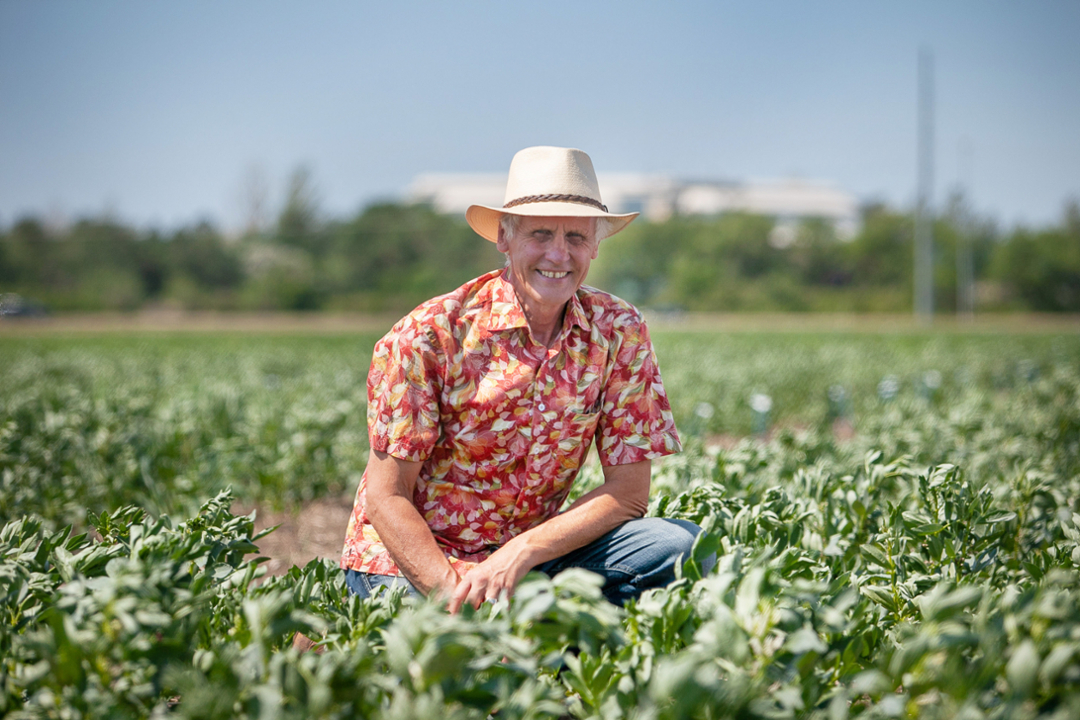
New USask research has potential to make fava beans a new favourite from farm to fork
SASKATOON – A once popular high-protein legume crop with potential to make farming more environmentally sustainable is poised for reinvigorated popularity, thanks to an international research team, including plant geneticists from University of Saskatchewan (USask).
By USask Research Profile and ImpactWhile the fava bean plant is high in protein, well-suited to growing in colder climates, and capable of virtually eliminating the need for fertilizer, it has one fatal flaw—for an estimated 400 million people worldwide, eating the bean can have severe health consequences. In people deficient in a certain enzyme, eating the bean causes damage to a person’s red blood cells.
In research just published in the journal Nature Plants, an international team of researchers including USask plant scientists have identified a key step in how the plant—also known as the faba bean or broad bean—produces the compounds vicine and convicine. In four per cent of the world’s population who carry a specific gene, digesting fava beans can trigger the blood disorder, known as favism.
“Fava bean has been a neglected crop because of the favism issue,” said Dr. Albert Vandenberg (PhD), USask plant breeder and geneticist, and co-author of the research. “Now, we can reduce 99 per cent of the vicine and convicine, and using sequencing and genomics, we should be able to zero in, to shut it down, 100 per cent.”
The international team also involving researchers from University of Copenhagen and Aarhus University in Denmark, University of Helsinki and Natural Resources Institute Finland in Finland, University of Reading, U.K., and Georg-August-University, Germany, has now identified the key biological pathway that results in vicine and convicine.
While fava beans have been cultivated since the Roman empire, favism has an equally long history, with the Greek philosopher Pythagoras discouraging his followers from consuming the bean as early as the fifth century BCE.
By identifying how the plant produces these compounds, new low vicine and convicine fava beans could be a new, high-value crop for farmers. In addition to being rich with protein, fava beans are exceptionally good at adding nitrogen to the soil.
“This is like a machine for replacing nitrogen fertilizer,” said Vandenberg. “It has huge ecological consequences in the future of agriculture, here and globally.”
By adding fava beans to regular crop rotation, producers could reduce some of their use of nitrogen fertilizer, Vandenberg said.
“Suddenly, everybody in the world is interested in this,” said Vandenberg.
In additional to being eaten as a dry bean, fava beans are also consumed as a fresh vegetable, and are generating interest from the food industry due to growing global demand for efficient, plant-based protein.
This work is the culmination of more than a decade of research and builds on a previous discovery by Dr. Hamid Khazaei (PhD), Vandenberg’s research associate currently at USask and soon to be at World Vegetable Centre–Taiwan, and co-author of the paper, identifying the specific genetic marker for the noxious compounds.
Vandenberg expects seed supplies of fava beans without vicine and convicine in sufficient quantities for commercial production to be available in 2022.
The research was funded by grants from Innovation Fund Denmark, Academy of Finland, U.K. Biotechnology and Biological Science Research Council, VILLUM Foundation, Danish National Research Foundation, Guangzhou Elite, and the German Federal Ministry of Food and Agriculture.
-30-
For more information, contact:
Victoria Dinh
USask Media Relations
306-966-5487
victoria.dinh@usask.ca

